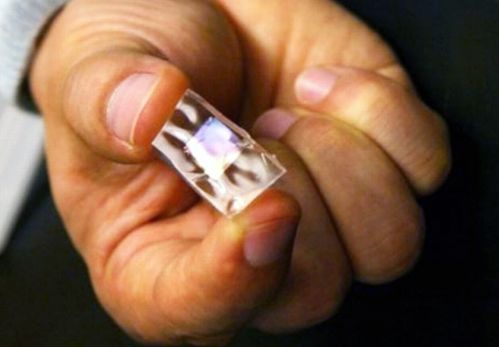Engineers at Princeton University have developed power-generating rubber films that could use energy from everyday body movements such as breathing and walking to power cell phones, pacemakers and more.
The "piezo-rubber chips" are made of lead zirconate titanate (PZT) nanoribbons embedded in silicone rubber sheets and produce electricity when flexed. PZT, said to be the most efficient piezoelectric material, is able to convert 80% of applied mechanical energy to electrical energy, making it 100 more times efficient than quartz, according to Princeton professor Michael McAlpine.

Currently, up to 100 PZT strips can fit in a millimeter of space, and since it's being placed on silicone, the technology is biocompatible. McAlpine says the chips could be implanted in the body to perpetually power medical devices, and the body wouldn't reject them. It could also be used in shoes to generate power from walking, and much more.
Interestingly, while the chips create electricity when flexed, the reverse is also true, they flex when electrical current is applied, opening the door for even more possibilities. Princeton didn't mentioned when the technology might find mainstream use.